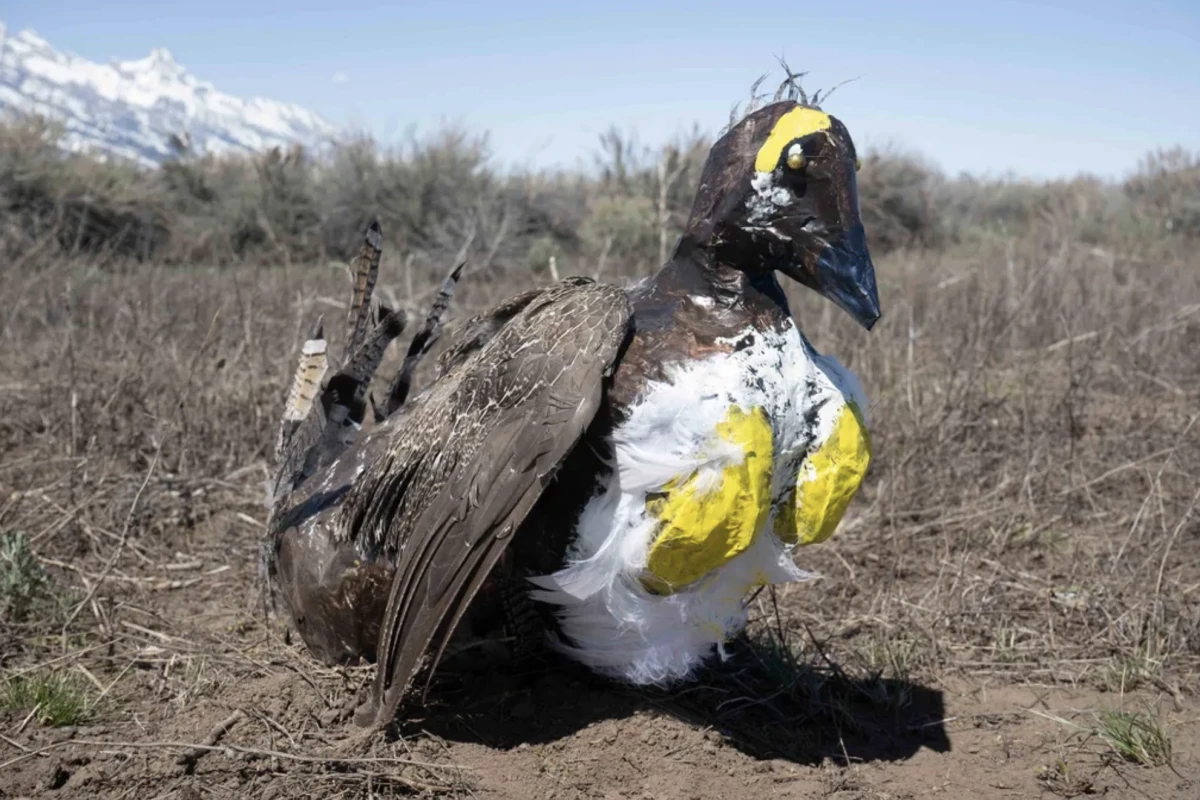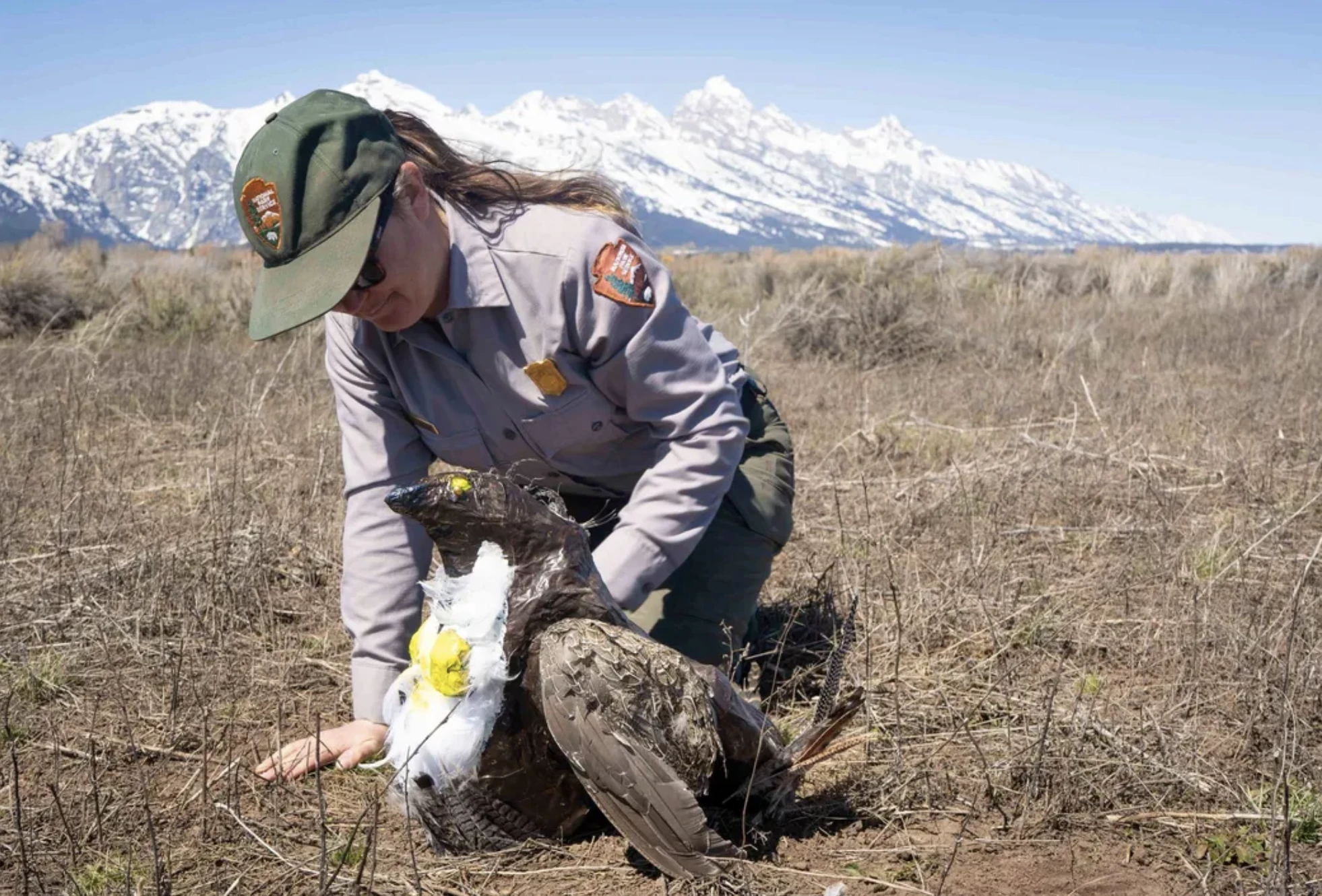Life-sized papier-mâché birds are popping up in Wyoming's Grand Teton National Park (GTNP) this spring, and they're quite a sight. By this we mean something you certainly wouldn't want to encounter while hiking at night. But there's more to these fake greater sage-grouse models than meets the eye.
"Can papier-mâché save lives?" That's the question that GTNP park rangers are asking – and one we've admittedly never considered – as they set up four of these elaborate male bird models to essentially serve as "honey traps," first attracting males who competitively put on a show in groups, and then greater sage-grouse females lured by the (real) birds' over-the-top performances.
“Between 1990 and 2013, 32 greater sage-grouse were killed by aircraft near Jackson Hole Airport – most during summer months when hens and chicks are active,” GTNP posted to Facebook. “To help reduce future strikes, the park, along with community partners, restored a 100-acre field just south of the runway and placed four handcrafted sage-grouse decoys to encourage birds to relocate their spring mating displays. This multi-year restoration is part of the Airport’s Wildlife Hazard Management Plan to improve safety for both wildlife and aircraft.”
The bird (Centrocercus urophasianus) is the largest grouse in North America, and perhaps most recognizable by the male's elaborate display and dance it employs to get the attention of and then seduce a mate. And it's quite the show …
During the dance, a bird will inflate two yellow egg-shaped air sacs and swing them about – and these are on full display in the papier-mâché versions. The decoy birds were created by The decoys, a group project by the Teton Raptor Center, Jackson Hole Middle School students and local artist Lori Solem, and show just how creative conservation has to get in order to find new ways to protect wildlife.
The national park is home to three ski resorts – Jackson Hole, Snow King and Grand Targhee – and is a popular hiking and mountaineering destination. This, of course, means lots of air traffic in and out of the park. The birds are noise-sensitive, especially around their "lek" – where a group of males will gather to do their dance and compete to be best in show for a potential mate. And there are only seven remaining leks in the national park.
Can these four pretend greater sage-grouse pull off an elaborate ruse, getting both males and females to a safer "lekking" spot? It remains to be seen. But if all goes to plan, we might be seeing animatronic birds that can mimic the movements of the males' dance by next year.
“If there’s a really cool bar and you want people to go to the bar, you turn up the music and you have everyone come,” Gary Duquette, who leads the robotics team, told the Jackson Hole News & Guide. “But then if you show up and no-one’s there, you’re like, ‘This is lame.’ So, we’re providing the birds partying and doing their little dances.”
"Now, trail cameras are keeping watch to see if the real grouse follow their papier-mâché look-alikes," the GTNP wrote in its Facebook post.
Hey, desperate times call for desperate measures – even papier-mâché.
Source: Grand Teton National Park






